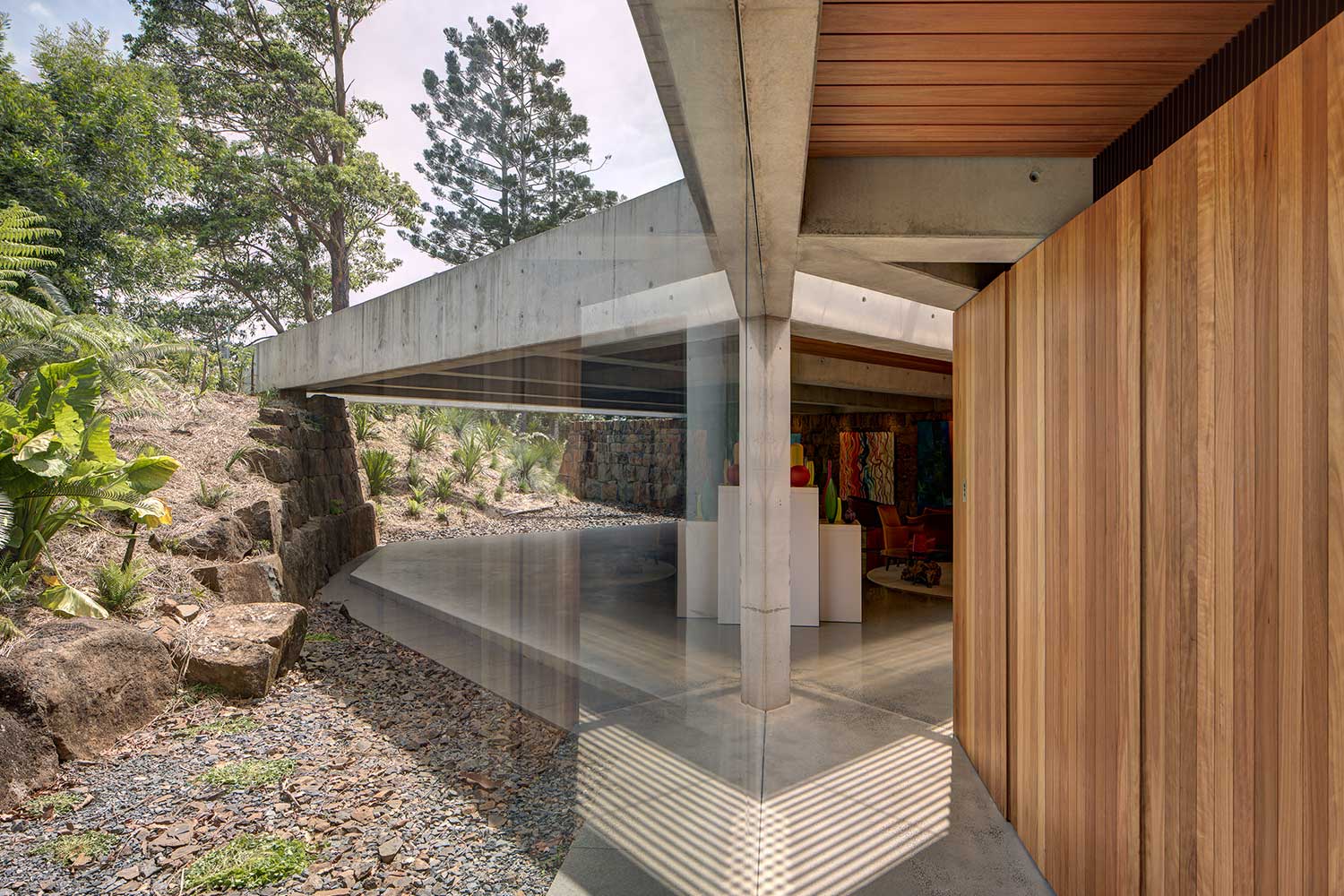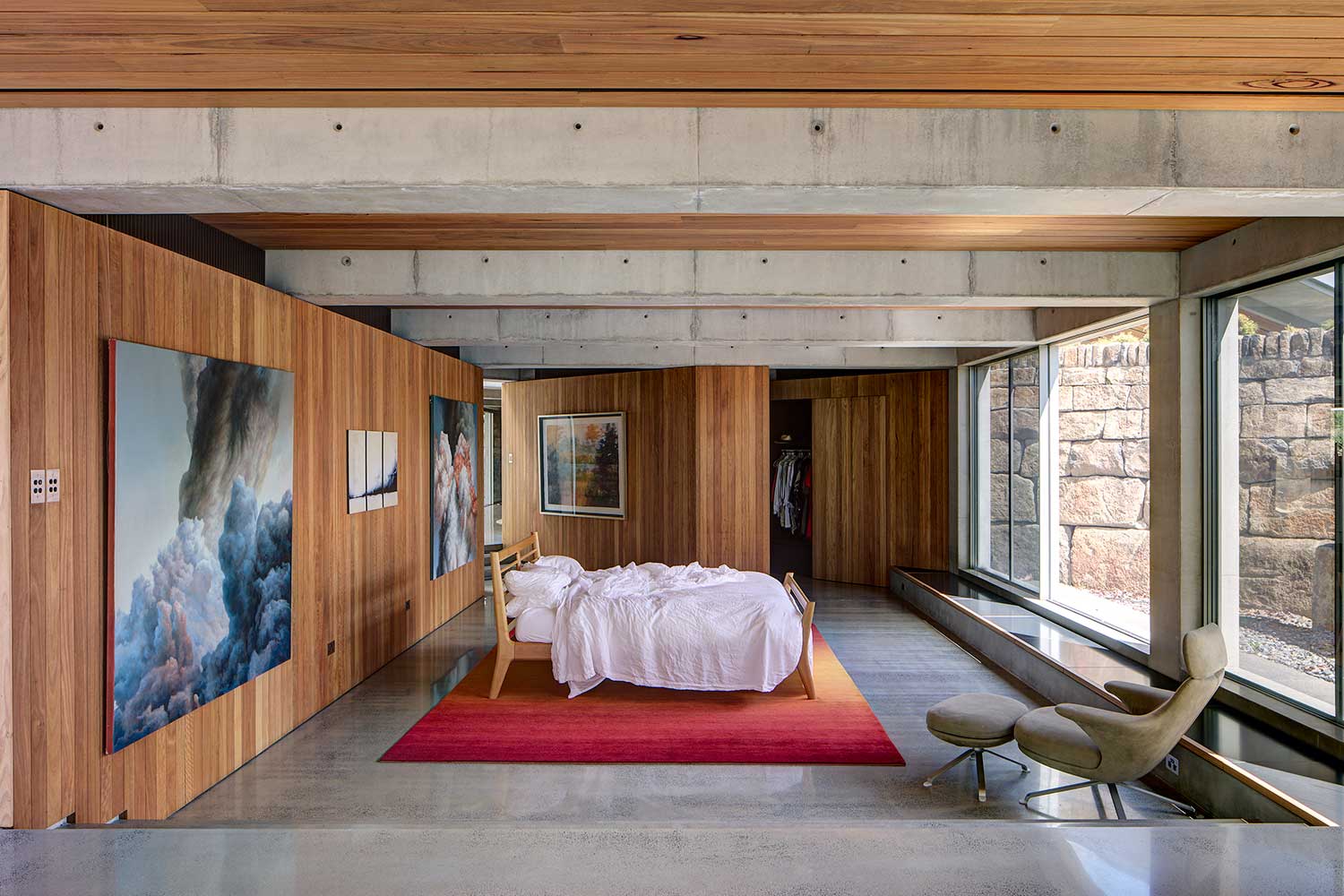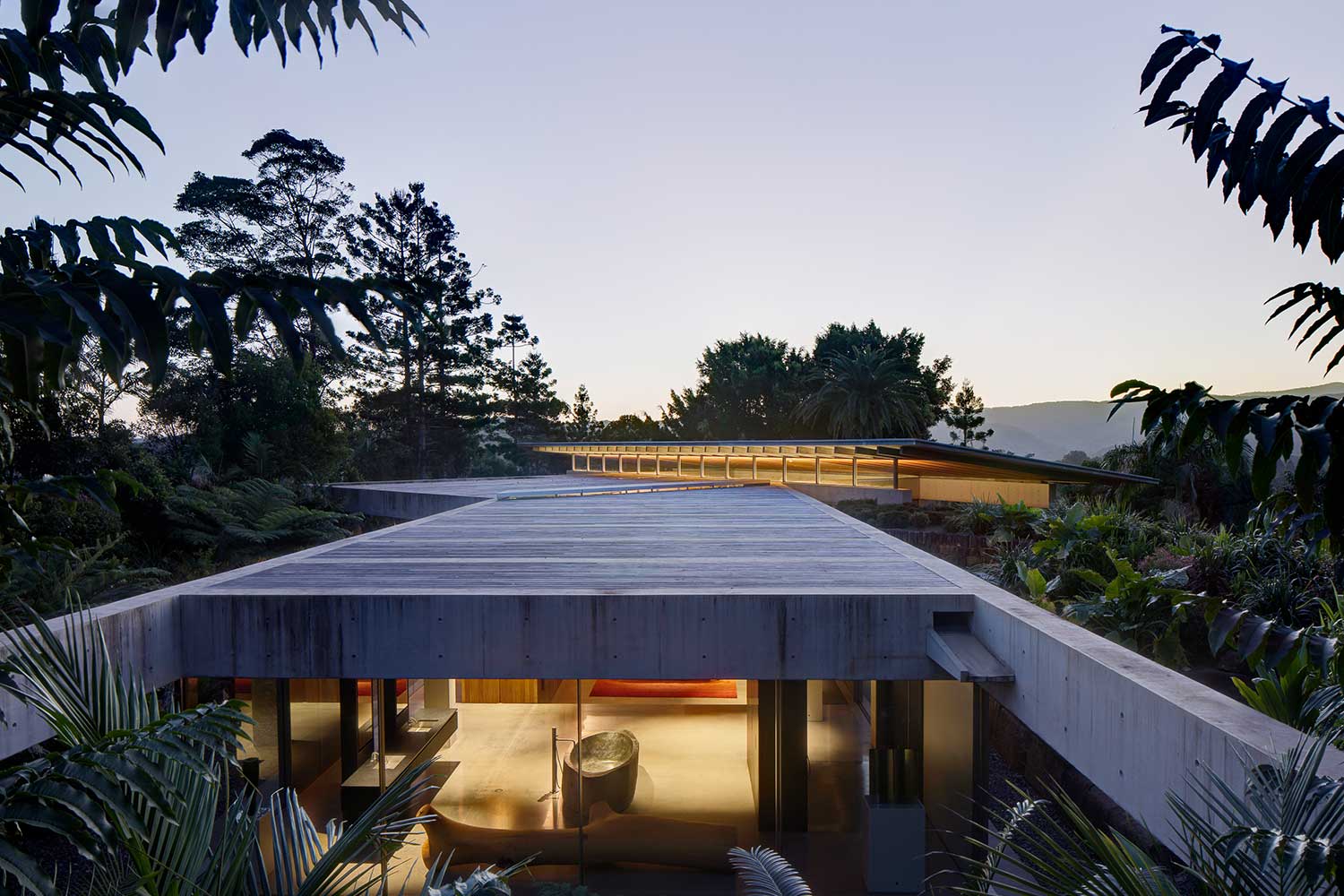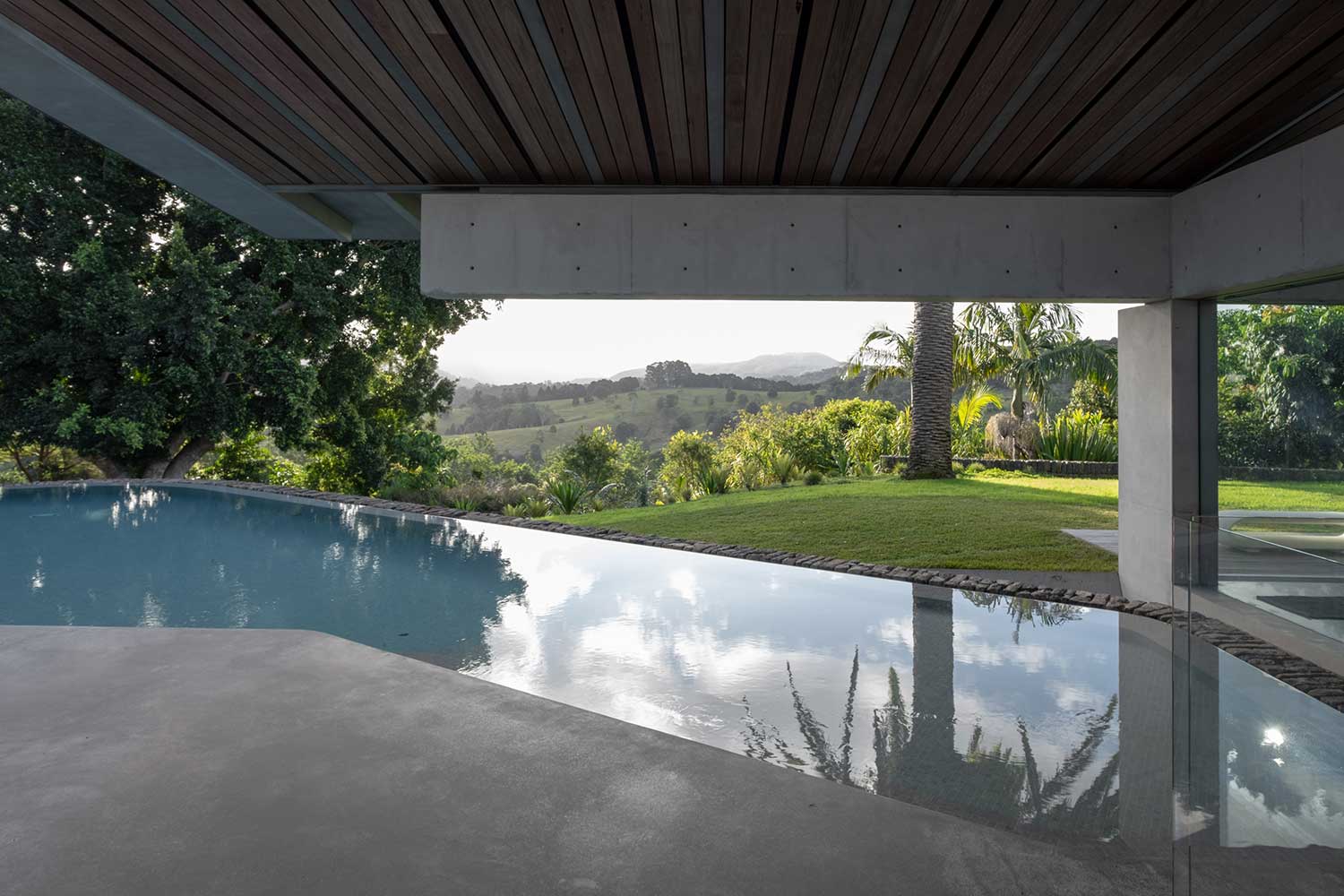Lune de Sang Pavilion
CHROFI
Australia
Lune de Sang is a unique multi-generational venture that sees a former dairying property transformed into a sustainably harvested forest, bringing back a pocket of subtropical rainforest to the Byron Bay hinterland. The vision is exceptional in that rather than planting a fast-growing crop, various hardwoods of the region have been chosen to establish a rainforest landscape that will take generations to mature. The hardwoods will be tended to maturity and then selectively harvested, the long lifespan of the trees meaning a wait of between 50 and 300 years before the various species fully mature.
CHROFI was captivated by this long-term vision, which goes beyond one’s lifetime and enjoyed a close collaboration with the client – one bound in collective understanding of the site, landscape and time. The rainforest timber’s unhurried growth influenced the design approach for inserting architecture into the site; all the buildings have been designed to respond to the notion of a 300-year lifecycle.
The project’s latest component, the Pavilion, defies easy definition as a ‘house’, belonging as it does to a suite of five structures that collectively shape the experience of the place. They have been conceived as site-ordering devices – concrete and stone elements that stitch and structure spatial relationships on the land. While categorically a dwelling, the Pavilion’s function is distinctly communal in nature. The building is divided into two very discrete parts: an open, functionally public, local gathering space, and a hidden, intensely private retreat.
The ambition was an elemental and atavistic architecture – structures that may appear to be rediscovered ruins. In the fullness of time, these structures are only revealed upon arrival at their immediate setting, intensifying their presence in the landscape. In the mean time, these quiescent structures will continue to look out to the forest waiting for its emergence.
Photography: Brett Boardman.




